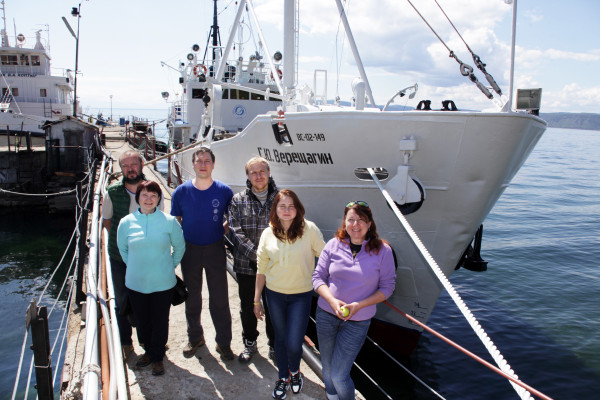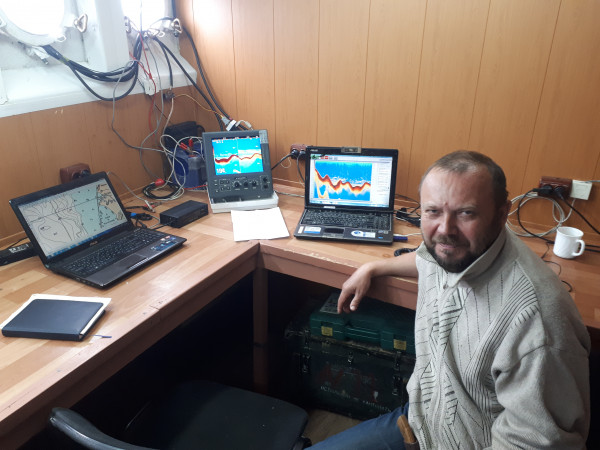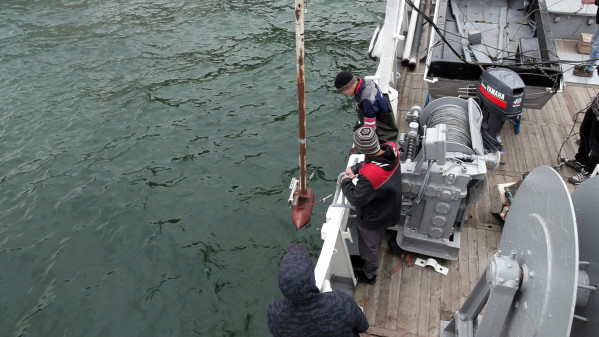Report on the quantification of Baikal omul in the Selenga fishing ground using the hydroacoustic method
During the spring warm-up period, the hydroacoustic survey of the omul feeding school was conducted at Lake Baikal, in the Selenga fishing ground. For the survey, an Ekho-Baikal sonar system was used in a dual-frequency mode. Equipment settings were as follows: probing signal frequency 28 and 200 kHz; pulse width 0.6 ms; and single target selection threshold -52 dB. The survey was carried out along the pre-planned traverse network (identical to the traverse network used in the 2015 survey) at depths from 50 to 400 m. The total distance travelled was ca. 160 nautical miles.
In parallel with the hydroacoustic survey, the temperature of the surface water in Lake Baikal was constantly recorded from the board of RV “G.Yu. Vereshchagin”, and its mineralization was evaluated. Along the route of the vessel, the measured values recorded the spring thermal bar, thus, localizing the shallow water boundary of the distribution of the Baikal omul feeding school. Additionally, several zooplankton samples were taken with Juday nets to study the forage base of Baikal omul.
Based on the data obtained during the hydroacoustic survey, there are several primary conclusions:
- The distribution of omul in the water area of the Selenga shallow water generally corresponded to the winter and spring one; the schools were mainly concentrated at depths of 150-200 m. Denser schools were observed near the underwater slope.
- In the daytime, there were sparse schools at depths of ca. 200-250 m. In the upper layers (10-150 m), there were small dense (non-scattering) schools of omul. At night, dense omul schools scattered at depths of 100-150 m and formed an alternative to the lower layer at depths of 200-250 m. Previously, it was suggested that a two-layered distribution corresponds to the differences in the behaviour of omul belonging to different morphological and ecological groups.
- According to preliminary data, the size of feeding omul near the Selenga area of fishing ground has changed towards its increase. This indicates the lack of the replenishment of juveniles sufficient to maintain the size structure of the feeding school. Such a situation can be due to a violation of the reproduction process resulting from poaching of spawning schools during the low-water river runoff from the main spawning rivers in previous years.
Post-processing operation of data on the hydroacoustic survey will provide the estimation of the abundance of the feeding school in the Selenga fishing ground. The results of the study are necessary for a comparative analysis of long-term data on the concentrations of feeding schools of Baikal omul in the Baikal’s main fishing area, as well as for forecasting changes in fishing reserves and development of recommendations for their rational use. The fundamental compound of these studies involves obtaining numerical estimates and mathematical description of spring and summer redistribution of Baikal omul.
Responsible executors: M.M. Makarov, Cand. Sc. (Geography), senior research scientist, P.N. Anoshko, research scientist.
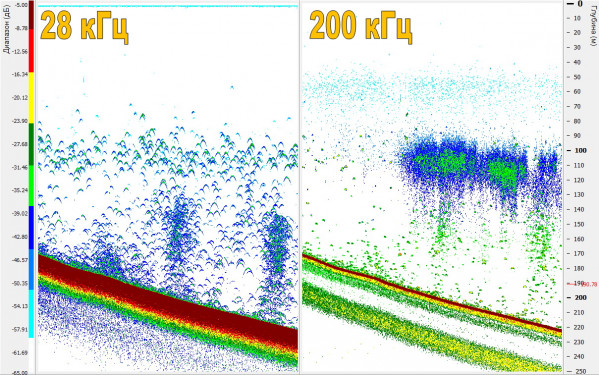
Echograms of Baikal omul schools based on dual-frequency probing data
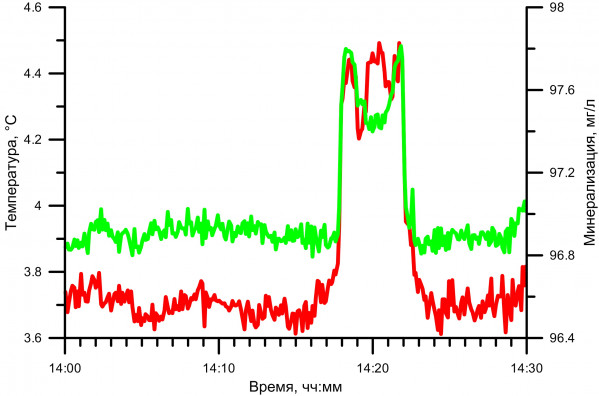
Thermal bar record near the Selenga Riv




